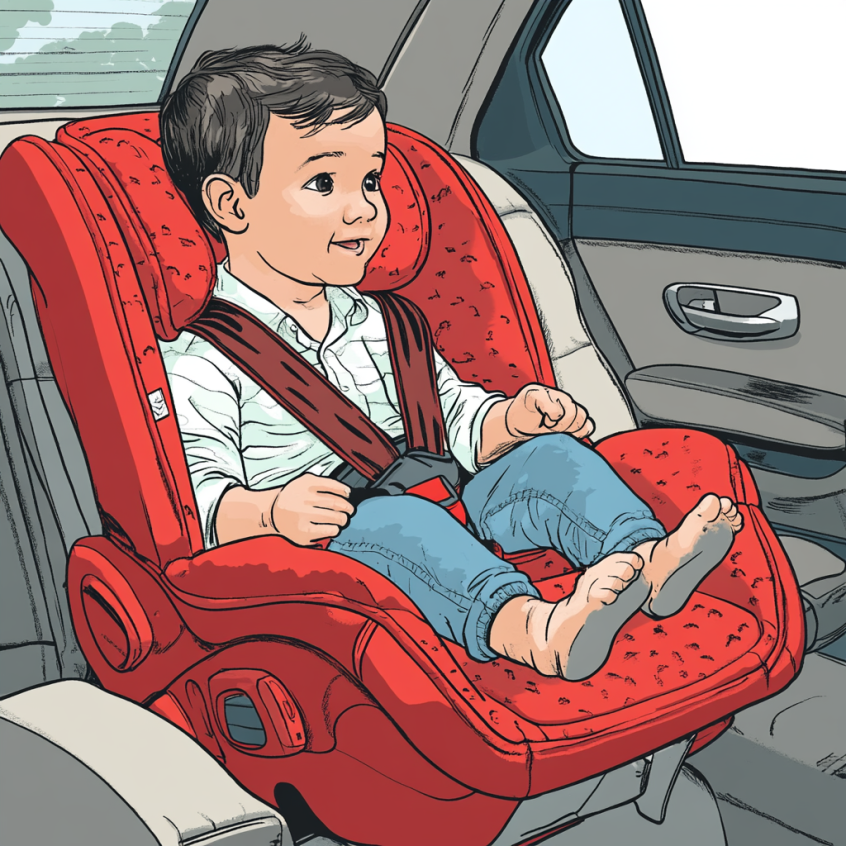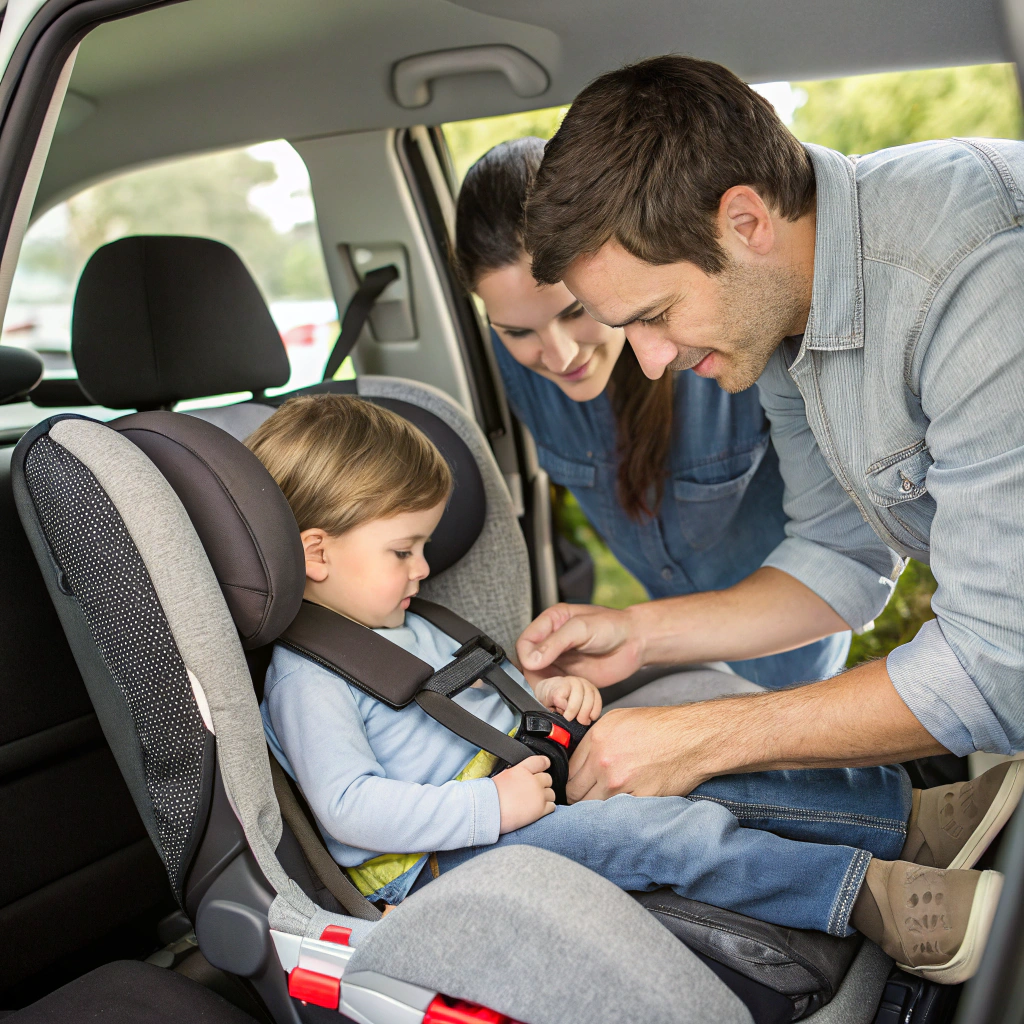Discover our essential car seat safety checklist and learn about the 5 common mistakes 90% of parents make. Protect your little one with these critical car seat safety tips.
Are you absolutely certain your child’s car seat is installed correctly? Statistics show an alarming 90% of parents make at least one critical error when it comes to car seat safety. These mistakes aren’t just common—they can be life-threatening. As a parent, nothing matters more than keeping your little one safe, yet car seat safety remains one of the most confusing aspects of childcare. Let’s break down the 5 most dangerous car seat mistakes and provide you with a comprehensive car seat safety checklist that could literally save your child’s life.
The Shocking State of Car Seat Safety
The numbers are sobering: according to the National Highway Traffic Safety Administration (NHTSA), car crashes remain a leading cause of death for children ages 1-13. Even more concerning, three out of four car seats are installed incorrectly. This isn’t just a minor oversight—it significantly reduces the protection your child receives during a collision.
Many parents believe they’ve done their due diligence by purchasing an expensive car seat, but the truth is that even the safest car seat is only effective when used correctly. Let’s examine the critical mistakes nearly every parent makes and how to avoid them.
1: Incorrect Installation Angle
Why the Angle Matters
For infants especially, the recline angle of a car seat isn’t just about comfort—it’s about airway safety. When a seat is installed too upright, a newborn’s head can fall forward, potentially obstructing their airway. Conversely, a seat that’s too reclined won’t properly protect your child in a collision.
How to Get It Right
- Check your car seat’s level indicator (bubble level, line indicator, or angle reference)
- For rear-facing seats, follow the manufacturer’s guidelines for the correct angle (usually 30-45 degrees)
- Use pool noodles or rolled towels under the base if needed to achieve the proper angle
- Have the installation checked by a certified Child Passenger Safety Technician (CPST)
2: Harness Straps Too Loose or Incorrectly Positioned
Loose harness straps might seem more comfortable for your child, but they significantly reduce protection in a crash. This is perhaps the most common daily error parents make.
The Pinch Test
- After buckling your child in, try to pinch the harness material at their shoulders
- If you can pinch excess webbing between your fingers, the harness is too loose
- The harness should be snug against your child’s body with no slack
Correct Harness Positioning
- Rear-facing seats: Harness straps should come through the slot at or below the child’s shoulders
- Forward-facing seats: Harness straps should come through the slot at or above the child’s shoulders
- The chest clip should be positioned at armpit level—not on the abdomen or the neck

3: Graduating to the Next Seat Too Soon
Parents often rush to transition their children to the next stage of car seat—moving from rear-facing to forward-facing, or from a harnessed seat to a booster—as if it were a milestone to celebrate.
The Safer Approach
- Rear-facing: Keep children rear-facing until they reach the maximum height or weight limit of their convertible car seat (usually until age 2-4)
- Forward-facing with harness: Continue using a 5-point harness until your child reaches the seat’s maximum limits (usually 40-65 pounds)
- Booster seats: Use until the child passes the 5-step test, typically between ages 10-12
Remember: Each transition reduces the level of protection. There’s no trophy for moving to the next stage early, but there could be severe consequences.
4: Using Second-hand Car Seats Without Proper Vetting
While hand-me-downs work for many baby items, car seats require special consideration:
When to Avoid a Used Car Seat
- If it’s been in any crash (even a minor one)
- If it’s past the manufacturer’s expiration date (typically 6-10 years from manufacture)
- If it’s missing parts, labels, or instructions
- If you don’t know its full history
What to Check Before Using
- Research if the model has been recalled
- Verify the manufacture date and expiration date
- Inspect all components for wear, cracks, or damage
- Test all buckles, adjusters, and LATCH connectors
5: Ignoring Compatibility Between Car Seat and Vehicle
Not all car seats fit properly in all vehicles. This mismatch can create dangerous gaps, instability, or improper angles.
Ensuring Compatibility
- Before purchasing, check if your car seat model is compatible with your vehicle
- Test the installation before committing to a particular seat
- Be aware that center seats often have limited LATCH anchors
- Consider seat belt installation if LATCH positioning creates issues
- Account for other passengers and car seats that need to fit in your vehicle
Your Complete Car Seat Safety Checklist
Print this out and use it every time you install a car seat or secure your child:
Installation Check
- Seat moves less than 1 inch when tested at the belt path
- Correct recline angle for child’s age
- Appropriate method used (LATCH or seat belt, not both unless approved)
- Tether strap connected for forward-facing seats
Harness Check
- Straps at or below shoulders (rear-facing)
- Straps at or above shoulders (forward-facing)
- Harness snug (passes the pinch test)
- Chest clip at armpit level
- No twists in harness straps
Child Fit Check
- Child’s weight and height within seat limits
- Top of head at least 1 inch below top of seat (rear-facing)
- Ears below top of shell (forward-facing with harness)
- Child can sit properly for entire trip (boosters)
Seasonal Adjustments
- No bulky coats under harness in winter
- Sun protection that doesn’t interfere with installation
- Appropriate temperature management (window shades, car seat covers only if approved by manufacturer)
Conclusion
When it comes to car seat safety, knowledge truly is power. By avoiding these five common mistakes and following our car seat safety checklist, you’re giving your child the best possible protection on every journey. Remember that car seat recommendations evolve as new research emerges, so stay informed by checking with resources like SafeKids.org or the American Academy of Pediatrics.
Don’t become part of the 90% statistic. Take fifteen minutes today to reassess your child’s car seat using our checklist—it could be the most important fifteen minutes you spend as a parent.
Frequently Asked Questions
How long should my child ride rear-facing?
Children should remain rear-facing until they reach the maximum height or weight limit of their car seat, typically until at least age 2. Many convertible seats allow rear-facing up to 40-50 pounds, enabling children to remain rear-facing until age 3-4, which is safest.
Can I use LATCH and the seat belt together to install a car seat?
Unless specifically allowed by both your vehicle and car seat manufacturers, you should use either LATCH or the seat belt, not both simultaneously. Using both can create opposing forces during a crash that weren’t accounted for in safety testing.
My child’s feet touch the vehicle seat back when rear-facing. Is this unsafe?
No, children can safely bend their legs, cross them, or put them up the seat back when rear-facing. There is no evidence that this increases leg injury risk, while there is substantial evidence that rear-facing significantly reduces head, neck, and spinal injuries.
Does my child need a car seat on an airplane?
While not required by law, the FAA strongly recommends using an approved car seat or CARES harness for children under 40 pounds. Turbulence can cause serious injuries to unrestrained children, and having your car seat at your destination ensures safe travel.
When can my child safely move to a booster seat?
A child is ready for a booster when they outgrow the weight or height limit of their forward-facing harness seat AND are mature enough to sit properly for the entire ride (typically age 5-7 at minimum). They must be able to keep the seat belt positioned correctly without leaning forward or slouching.
How do I know if my car seat is expired?
Most car seats have the expiration date stamped on the bottom or side of the seat. If not clearly marked, check the owner’s manual or contact the manufacturer with the model number and date of manufacture, which is always present on the seat.
Is it safe to use a car seat after a minor fender bender?
The NHTSA recommends replacing a car seat after any moderate to severe crash. For minor crashes, replacement may not be necessary if ALL of these criteria are met: you were able to drive away, no doors were damaged, no injuries occurred, airbags didn’t deploy, and there’s no visible damage to the car seat.
What’s the safest position in the car for a car seat?
The center of the back seat is statistically the safest position, as it’s furthest from potential impact points. However, only use this position if you can achieve a secure installation. A properly installed car seat in an outboard position is safer than a poorly installed center seat.
Can I use a second-hand car seat from a family member?
Only accept a used car seat if you know its complete history, it has never been in a crash, it’s not expired, has no recalls, comes with all parts and manuals, and shows no signs of damage or wear to the harness, shell, or components.
How tight should the car seat be once installed?
A properly installed car seat should not move more than 1 inch side-to-side or front-to-back when tested at the belt path (where the seat belt or LATCH strap passes through the car seat). Use your non-dominant hand to test—this prevents over-tightening.
Should the car seat move at all after installation?
Some movement is normal at the top of the car seat, especially for rear-facing seats. What matters is that there is less than 1 inch of movement when tested at the belt path—not at the top or sides of the seat.
Is it safe to use car seat accessories like strap covers or head positioners?
Only use accessories that came with your car seat or are explicitly approved by the manufacturer for your specific model. Aftermarket products haven’t been crash-tested with your seat and may interfere with the harness function or create additional hazards.
How do I clean my car seat without compromising its safety?
Always follow the manufacturer’s cleaning instructions in your manual. Generally, harness straps should be spot-cleaned with water only (no harsh chemicals that could weaken the webbing), and plastic components can be cleaned with mild soap and water. Never submerge buckles or LATCH connectors.












Leave a Comment